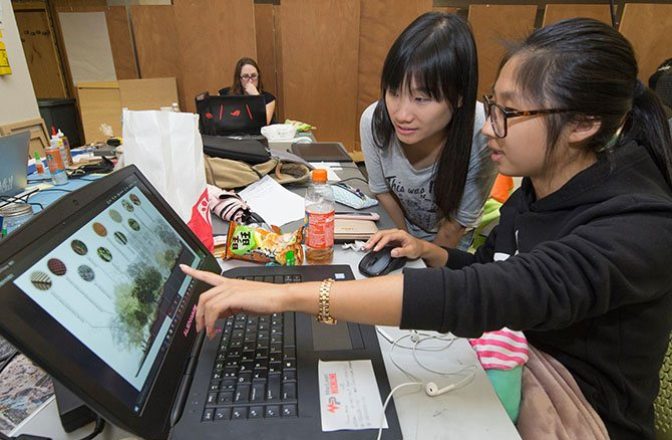Biomedical Engineering TAMU Course Requirements
Biomedical Engineering TAMU Course Requirements – Biomedical Engineering, an ever-evolving and dynamic field, unites the principles of medicine and engineering in order to generate groundbreaking solutions to address healthcare challenges. The focal point of this innovation resides within the Biomedical Engineering program at Texas A&M University (TAMU), which is held in high regard due to its exceptional academic standing and forward-thinking approach. TAMU serves as a guiding light for aspiring biomedical engineers across the globe. School News Portal
The program offered by the university is carefully constructed, with a strong emphasis on ensuring that students not only possess a comprehensive understanding of theoretical concepts but are also equipped with practical skills through hands-on experience. This methodology guarantees that graduates are well-prepared to make significant contributions to the biomedical field, regardless of whether they choose to engage in research, design cutting-edge medical devices, or contribute to the broader spectrum of healthcare IT and associated fields.
Understanding the course prerequisites is of paramount importance for individuals contemplating enrollment as a potential student or those with an inquisitive disposition towards this particular field of study. The contents of this article aim to offer a thorough and extensive elucidation of the fundamental subjects, modules tailored to specific majors, prospects for practical instruction, and additional pertinent information. Immerse yourself in this educational exploration to uncover the scholarly voyage that awaits within the Biomedical Engineering program at Texas A&M University.
Read Also: TAMU BYOD Requirements
Biomedical Engineering at TAMU
Texas A&M University’s Biomedical Engineering program empowers students to design solutions to medical challenges. With an emphasis on innovation and practical application, TAMU prepares its graduates to shape the future of healthcare.
Core Course Requirements
To ensure a robust foundation, students must complete the core courses, which include:
- Mathematics and Basic Sciences:
- Calculus I, II, and III
- General Chemistry I and Lab
- Physics I and II with Labs
- Organic Chemistry I with Lab
- Engineering:
- General Engineering, Biomedical Engineering Design I, II and III
- Biomedical Computing
- Thermodynamics Biomedical Engineering TAMU Course Requirements
Major-specific Courses
Delving deeper into the major, students explore:
- Physiology for Biomedical Engineers: An understanding of human physiology is critical for designing medical equipment.
- Biomedical Electronics and Instrumentation: Equip yourself with knowledge of the electronic equipment used in the medical field.
- Biomaterials and Biomechanics: Learn about the materials compatible with biological systems and the mechanics behind biological structures.
- Bio-imaging Techniques: A thorough understanding of imaging techniques like MRI, CT scans, and ultrasounds.
Read Also: BIMS Requirements TAMU
Technical Electives
To diversify knowledge and skills, TAMU allows students to select technical electives from a curated list. Some popular choices include:
- Advanced Biomedical Imaging
- Medical Device Design
- Neuroengineering
Laboratories and Practical Work
Practical application is crucial in biomedical engineering. TAMU emphasizes hands-on experience through:
- Biomedical Engineering Labs: Ranging from basic to advanced, these labs offer real-world application opportunities.
- Capstone Projects: Senior students embark on projects, solving real-world problems and presenting their innovative solutions.
General Education Courses
To ensure a holistic education, TAMU also requires students to complete courses outside their major. These include:
- English Composition and Literature
- Social and Behavioral Sciences
- History and Humanities
Read Also: TAMU Biology Transfer Requirements
Research Opportunities
TAMU is proud of its cutting-edge research facilities. Biomedical engineering students can collaborate with faculty on pioneering research, presenting findings at conferences, and even co-authoring papers.
Internships and Co-op Programs
Practical experience is invaluable. TAMU has ties with leading medical companies, offering students internships and co-op programs. These experiences provide insights into the industry and can be instrumental when seeking employment post-graduation.
Graduation Requirements
For successful completion of the Biomedical Engineering program:
- Students must achieve a minimum GPA as specified by TAMU.
- Completion of all core, major-specific, elective, and general education courses.
- A capstone project and any additional requirements as set by the department.
Read Also: TAMU Change of Major Requirements
Future Prospects for Graduates
Upon graduation, students are well-equipped to venture into various sectors:
- Medical Equipment Design and Manufacturing: Develop the next generation of medical devices.
- Research and Development: Dive into innovative solutions for medical challenges.
- Healthcare IT: Work on the integration of technology in healthcare, such as telemedicine.
Conclusion
Biomedical Engineering at Texas A&M University offers a comprehensive curriculum, equipping students with the necessary skills to revolutionize healthcare. By understanding the course requirements, prospective students can effectively navigate their academic journey at TAMU and beyond.
Note: It’s essential to stay updated with TAMU’s official website or contact the university directly for any changes or updates to the course requirements.
Read Also: Accounting TAMU Requirements


